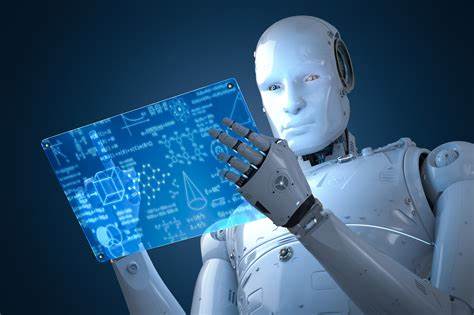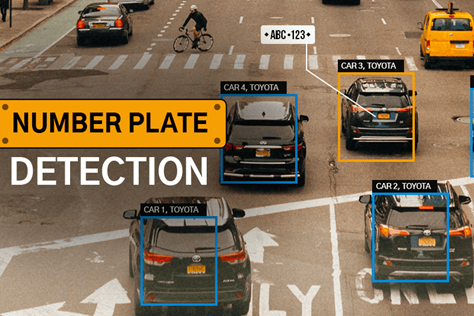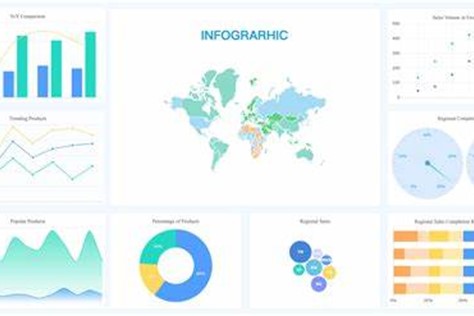Center for Skill and Entrepreneurship Development - Data Science
Industry Inside Institute
DCS skill development through the CSED (Industry Inside Institute) program enhances proficiency in data science by combining advanced analytics techniques with industry-driven insights. The curriculum incorporates machine learning algorithms, data wrangling, and big data technologies, ensuring participants gain expertise in tools such as Python, R, and SQL. Through hands-on projects, predictive modeling, and real-time data analysis, learners are exposed to practical applications of statistical methodologies and data visualization. The program’s integration of industry internships and collaborations with data science experts bridges the gap between academic theory and practical implementation, preparing participants for complex data challenges in a dynamic field.
Mobile App Development
Database
Web Application
Cloud
Backend & Microservices
DevOp

Data Collection

Machine Learning and AI

Data Cleaning and Preprocessing

Deep Learning

Data Exploration and Analysis

Data Visualization and Deployment
DATA ANALYTICS-BEGINNER
OBJECTIVES
The objective of this training program is to provide an introduction to data analytics for IIOT data and equip learners with the knowledge and skills needed to collect, analyze, and visualize IIOT data using various data analytics tools and techniques.
OUTCOMES
- Understand the basics of IIOT and its role in modern industry
- Collect and prepare IIOT data for analysis using various techniques and tools
- Perform exploratory data analysis and identify patterns and trends in IIOT data
- Develop predictive models using machine learning algorithms for IIOT data
- Perform time series analysis and forecasting on IIOT data
- Implement real-time data processing and analytics on IIOT data
- Understand the security and privacy concerns of IIOT data and techniques to address them
SCOPE
- IIOT Data Analyst
- IIOT Data Engineer
- IIOT Data Scientist
- IIOT Analytics Consultant
PROJECTS
- Develop a predictive maintenance model for IIOT data
- Analyze the energy consumption of a manufacturing plant using IIOT data
- Develop a real-time dashboard for monitoring IIOT data
- Perform a time series analysis on IIOT data to identify production trends
- Build a machine learning model to predict the failure of a machine based on IIOT data
DATA ANALYTICS-INTERMEDIATE
OBJECTIVES
The objective of this training program is to provide participants with an in-depth understanding of advance data analytics and its various components, including data collection strategies, high volume and velocity of data, different types of data cleaning, noise removal, data integration, data transformation, data analytics and predictive modeling, data visualization, and histograms. Participants will also gain practical experience in applying these techniques to real-world data sets and projects.
OUTCOMES
- Understand the fundamentals of data analytics and its various components.
- Identify and evaluate data sources and collection strategies.
- Clean and preprocess data using a variety of techniques.
- Apply noise removal techniques to enhance data quality.
- Integrate and transform data to meet specific business requirements.
- Analyze and model data using advanced predictive modeling techniques.
- Visualize data using a variety of techniques and tools.
- Use histograms to analyze data distributions and make data-driven decisions.
- Work effectively with large data sets and real-time data processing
SCOPE
Participants who complete this training program will be equipped with the knowledge and skills necessary to pursue a career in data analytics or related fields. Job roles that participants can consider include
- Business Analysts
- Data Engineers
- Data Visualization Specialists
- Data Analyst
- Data Scientist
PROJECTS
- Predicting Customer Churn: Use predictive modeling techniques to identify factors that contribute to customer churn in a subscription-based business model. Develop a model that can accurately predict which customers are at risk of churning, and use these insights to implement targeted retention strategies.
- Improving Supply Chain Efficiency: Analyze supply chain data to identify bottlenecks, optimize delivery routes, and reduce transportation costs. Use data integration and transformation techniques to merge and preprocess data from multiple sources, and develop visualizations that provide insights into supply chain performance.
DATA ANALYTIC- ADVANCE
OBJECTIVES
The objective of this training program in Data Analytics for Business and Finance is to equip participants with the knowledge and skills required to analyze large data sets and make data-driven decisions in business and finance. The program aims to provide participants with hands-on experience with various data analytics tools and techniques to prepare them for a career in data analytics in the business and finance sector.
OUTCOMES
- Understand the fundamentals of data analytics and its applications in business and finance.
- Collect, pre-process, and analyze large data sets using various data analytics tools and techniques.
- Conduct exploratory data analysis, descriptive analytics, inferential analytics, regression analysis, time series analysis, and predictive analytics.
- Interpret and communicate insights and findings from data to stakeholders.
- Apply data analytics techniques to real-world business and finance problems.
SCOPE
The job scope for a data analyst in the business and finance sector is vast. Data analysts in this field are responsible for collecting, pre-processing, analyzing, and interpreting large data sets to identify patterns, trends, and insights that can be used to drive business decisions. They work in various industries, including banking, insurance, investment, accounting, and financial consulting. The job roles for a data analyst in this field include Financial Analyst, Business Analyst, Data Analyst, Investment Analyst, and Risk Analyst.
PROJECTS
The training program may include hands-on projects to provide participants with practical experience in using data analytics tools and techniques. Some of the project ideas for this program are:
- Analyzing customer behavior data to identify potential opportunities for cross-selling and up-selling in the banking industry.
- Conducting a time series analysis of stock prices to predict future trends in the stock market.
- Conducting a predictive analysis of credit card fraud transactions to identify fraudulent activities and prevent losses.
- Analyzing sales data to identify the most profitable product lines and regions for a retail company.
- Real-Time Sentiment Analysis: Collect and analyze social media data in real-time to track sentiment around a particular brand, product, or topic. Use natural language processing techniques to classify social media posts as positive, negative, or neutral, and develop visualizations that provide real-time insights into public sentiment.
- Fraud Detection in Financial Transactions: Develop a fraud detection model using machine learning techniques to identify potentially fraudulent transactions in financial data. Use data cleaning and transformation techniques to preprocess the data and improve model accuracy, and develop visualizations that provide insights into potential fraud patterns.
MACHINE LEARNING-BEGINNER
OBJECTIVES
The objective of the Introduction to Machine Learning training program is to equip participants with the foundational knowledge and practical skills needed to develop and apply machine learning algorithms in various contexts. The program will cover the theory and practice of machine learning, including data preprocessing, regression, classification, clustering, neural networks, model evaluation, and optimization, as well as ethical considerations.
OUTCOMES
- Understand the principles and types of machine learning.
- Apply machine learning techniques to real-world problems.
- Preprocess data, create machine learning models, and evaluate their performance.
- Use various machine learning algorithms for regression, classification, clustering, and neural networks.
- Optimize machine learning models to improve their accuracy and performance.
- Apply ethical considerations to machine learning projects.
SCOPE
- Machine Learning Engineer
- Data Scientist
- Data Analyst
- AI Developer
- Research Scientist
- Business Intelligence Analyst
PROJECTS
To reinforce the knowledge and skills gained during the training program, participants will be assigned hands-on projects. These projects will require participants to apply their learning to real-world scenarios, such as predicting customer churn, classifying images, or clustering customer segments. Participants will have access to datasets and tools to complete these projects.
MACHINE LEARNING-ADVANCE
OBJECTIVES
The objective of this training program is to provide participants with a comprehensive understanding of Machine Learning techniques for IIOT Data. The program covers the essential concepts of Supervised and Unsupervised Learning techniques, Deep Learning techniques, Time Series Analysis, and their applications to IIOT data. The program aims to equip participants with the skills and knowledge required to apply Machine Learning techniques to real-world problems in the IIOT domain.
OUTCOMES
- Ability to understand and apply scaling up machine learning techniques and associated computing techniques and technologies.
- Ability to recognize and implement various ways of selecting suitable model parameters for different machine learning techniques.
- Ability to integrate machine learning libraries and mathematical and statistical tools with modern technologies.
- Understand the key concepts of Machine Learning and IIOT Data
- Apply various data preprocessing techniques to handle IIOT Data
- Apply Supervised and Unsupervised Learning techniques to analyze IIOT Data
- Apply Deep Learning techniques for IIOT Data analysis
- Apply Time Series Analysis techniques for IIOT Data analysis
- Identify the applications of Machine Learning for IIOT Data
- Develop and implement Machine Learning models for real-world IIOT problems
SCOPE
- Data Scientist
- Machine Learning Engineer
- IIOT Analyst
- Predictive Maintenance Engineer
- Quality Control Engineer
- Anomaly Detection Engineer
- Research Scientist
PROJECTS
The training program includes several hands-on exercises and a project work to enable participants to apply the concepts learned in the program to real-world problems. The project work involves developing and implementing Machine Learning models for IIOT Data analysis.
- Heart Attack Prediction
- Rain prediction
- Sensex prediction
- Engine health prediction Vibration
- Movie Recommendation System
- Auto Correct Keyboard -NLP
- Match prediction Sports Data
DEEP LEARNING
OBJECTIVES
The objective of this training program is to equip participants with a strong foundation in deep learning and computer vision, enabling them to build and deploy models that can analyze and interpret images, videos, and other visual data.
OUTCOMES
- Understand the basics of deep learning and neural networks
- Build and train deep learning models for computer vision tasks, such as image classification, object detection, and segmentation
- Apply computer vision techniques for tasks such as face recognition, image registration, and optical flow analysis
- Use libraries and frameworks such as TensorFlow, PyTorch, OpenCV, and scikit-learn
- Create end-to-end deep learning and computer vision projects
- Debug and optimize deep learning and computer vision models
SCOPE
- Computer vision engineer
- Deep learning engineer
- Research scientist
- Data scientist
- Machine learning engineer
PROJECTS
- Building a convolutional neural network (CNN) for image classification
- Using transfer learning to train an image recognition model
- Building a face recognition system using OpenCV and deep learning
- Building an object detection and tracking system for surveillance video
- Building a lane detection system for self-driving cars

ARTIFICIAL INTELLIGENCE -BEGINNER
OBJECTIVES
The objective of this training program is to provide a comprehensive introduction to the fundamental concepts and techniques in Artificial Intelligence for beginners. The program aims to equip the learners with the necessary skills and knowledge required to pursue a career in AI and related fields.
OUTCOMES
- Understand the different types of AI and their applications.
- Understand the basic concepts and terminologies of AI
- Build and train basic AI models using Machine Learning and Artificial Neural Networks
- Apply Natural Language Processing and Computer Vision techniques to solve real-world problems
- Understand the importance of AI ethics and safety
- Deploy and optimize AI models in production environments
- Work on real-world AI applications
SCOPE
- AI Developer
- Machine Learning Engineer
- Data Scientist
- Robotics Engineer
- NLP Engineer
- Computer Vision Engineer
PROJECTS
- Sentiment Analysis using NLP
- Image Classification using CNNs
- Object Detection using OpenCV and TensorFlow
- Speech Recognition using Deep Learning
ARTIFICIAL INTELLIGENCE -ADVANCE
OBJECTIVES
The objective of this training program is to provide participants with an in-depth understanding of advanced Artificial Intelligence (AI) concepts and applications, including machine learning, natural language processing, computer vision, robotics, AI ethics, and deployment.
OUTCOMES
- Understand the different types of AI and their applications.
- Apply machine learning algorithms to solve real-world problems.
- Use natural language processing techniques to analyze text data.
- Apply computer vision algorithms to analyze and recognize images and objects.
- Develop and program robots using AI technology.
- Understand ethical considerations in AI and how to ensure accountability and fairness.
- Deploy AI models in production environments and optimize their performance.
SCOPE
- Data Scientists
- Machine Learning Engineers
- AI Engineers
- Robotics Engineers
- AI Ethics and Governance Experts
- AI Deployment and Optimization Specialists
PROJECTS
- Developing a machine learning model to predict a target variable from a dataset
- Developing a natural language processing model for sentiment analysis or text classification
- Developing a computer vision model for image recognition or object detection
- Building and programming a robot to perform a specific task using AI technology
JOIN HANDS WITH US
Sample Heading
I am text block. Please change this dummy text in your page editor for this feature box.